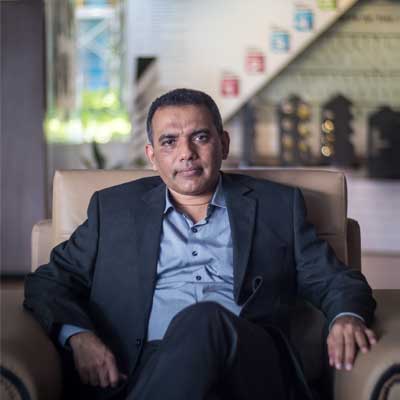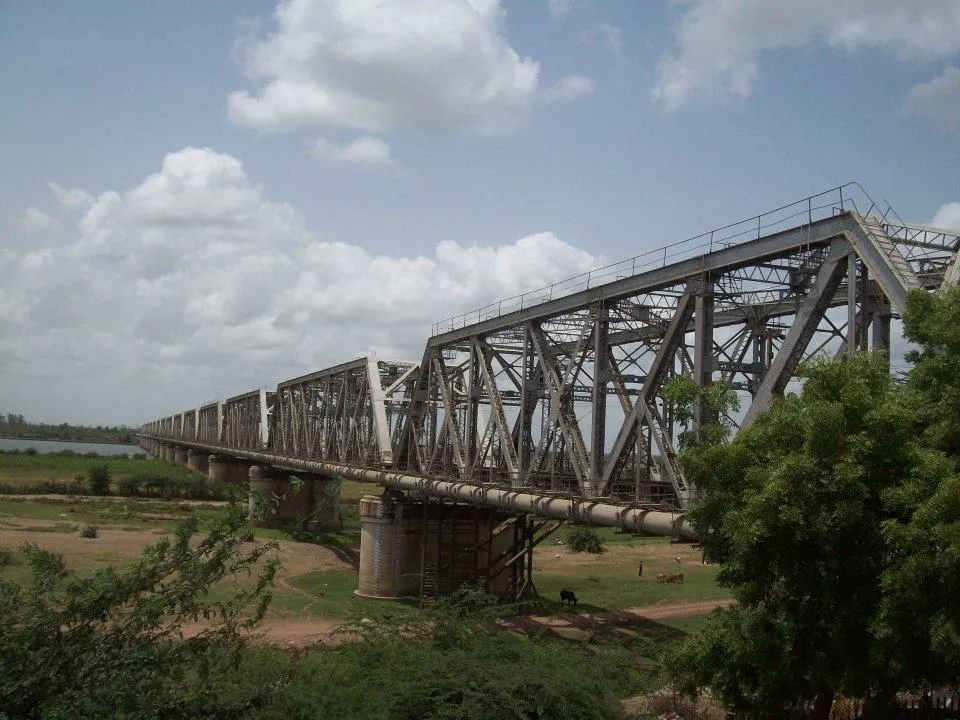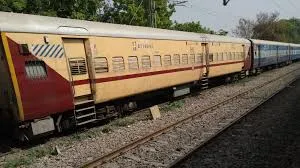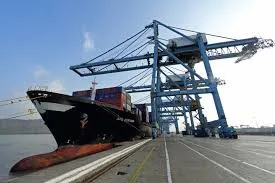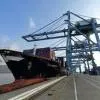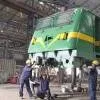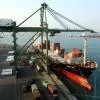Covid-19 pandemic is rapidly changing consumer behaviour, and the real estate and construction industry need to accelerate the use of technology to improve its productivity, says Anup Mathew, Senior Vice President and Business Head, Godrej Construction.Technology plays a vital role in infrastructure projects today. Please share your thoughts.Yes, technology is playing an increasing role in the planning and execution of infrastructure projects today. Businesses today have more access to information than ever before. The real estate and construction industry is gradually increasing the use of data for gaining useful business insights. This is useful for designing and developing better products and services that meet the needs of customers.While AI and 3D printing technology are being implemented for certain limited use cases, and for demonstration of proof of concept, these technologies have yet to make deep inroads into everyday construction processes and systems. However, such technologies are likely to be implemented to a larger extent in the years ahead.The COVID-19 pandemic is rapidly changing consumer behaviour. Therefore, the real estate and construction industry will need to accelerate the use of such technologies to improve its productivity and the quality of its products and services as we go forward.Do you think the Indian construction industry is slow in terms of digital adoption? What according to you are major problems/hurdles for the slow adoption rate?The construction industry globally has been slow in adopting digital technology. This has been researched and confirmed by some of the leading international management consulting firms. So also, in India, the industry has thus far been largely adopting a more traditional approach for construction.The slower adoption of digital technology in this industry may perhaps be because of the high dependence on the experience of the existing workforce. They would usually be more comfortable with adopting the time-tested traditional methods for planning and construction of projects. This will of course need to change as we go forward, as the productivity in the industry needs to improve significantly.What are the latest technologies in demand in the Indian construction sector?Some of the technologies which are currently in demand in the construction & real estate sector include software technologies for Project Management systems, Progress Tracking and Visualisation Tools, software systems for Architectural & Engineering Design, Enterprise Resource Planning and Management software system, Drone Technology for survey, IoT & Digital Technology applications for Quality Control, automation for smart homes & offices, Building Management Systems etc.Technologies such as BIM (Building Information Modelling) are being used by Architects, Engineering Design Consultants, Project Managers & Field Engineers to improve collaboration and coordination in projects. Using BIM helps in early clash detection and improves planning, monitoring & coordination during various stages of the construction project. It, therefore, helps improve the productivity, quality, and overall delivery of projects.The use of Pre-engineered, Prefabricated Construction Technology, and systems, modular construction systems, concrete formwork systems, etc. also help improve the speed and quality of construction.It is a well-known fact that many construction projects often have significant time and cost overruns. Leveraging appropriate technologies can help the construction industry significantly improve the overall delivery of projects to meet the expectations of clients and other key stakeholders.Use of technology in Godrej constructionProject: Godrej PlatinumTech used: Aluminium System formwork, IoT sensors for monitoring of strength gain in concrete, automated cut and bend technology for production of Ready Made Steel, high fire rated façade systems using CSAS (Coated Solid Aluminium Sheets) with high fire rating for building façade, imported Façade Access System and using superior Fall Protection systems for improved safety during the construction stage.Energy-efficient double glazed aluminium system windows, energy-efficient electrical appliances such as 5 Star rated air conditioners, water-efficient fittings & fixtures, and solar water heating systems.Advantages: The use of such products & systems helps us develop our built environment in a more sustainable manner.Project:- Godrej Khalapur Industrial CampusTechnology used: Pre-Engineered & Prefabricated Building Construction technology. Drone technology for a topographic survey. Using this technology helps plan, design, estimate, and optimise the ground development and earthwork activities for the project. Digital technologies such as the Godrej Construction Materials Mobile App for managing our ready mix concrete scheduling & concreting operations.Advantages: The project management system enables us to track our ongoing projects more effectively even though they are in multiple locations across the country. The updates from each of our projects help us flag-off any potential issues or likely delays. The data generated from our completed projects is used for analysing the performance of our project delivery and to improve the planning and scheduling for future projects. The iReport mobile app for identifying potential hazards and reporting near-miss incidents.Do you face any challenges concerning technology implementation? How do you overcome it?Implementation of any new technology is often an iterative process. It needs the support of the organisation’s leadership team for effective change management, by engaging with key stakeholders until the new systems and processes have stabilised.For example, while implementing a new Project Management System, we faced several challenges at various stages of the implementation - from the initial stage of data gathering to the development of appropriate project reports & dashboards, data analysis, effective monitoring, and review of the project activities, even until the successful closure of the project. Much of the challenges were overcome through regular communication with key stakeholders and by imparting training to key users.In when we used cut & bent Ready Made Steel (RMS) reinforcement bars for the first time in the construction of one of our high-rise residential buildings, we faced several challenges in the initial stage. It was cumbersome to sort the steel reinforcement bars on site, as the lots delivered would often differ from the requirement on site. However, with the coordinated effort by our project and production team members, the process got streamlined through proper tagging, colour coding, more accurate BBS, and just in-time delivery to match the project progress. This also helped in improving and reducing the wastage of steel on site and improved the overall speed of construction.Safety plays a critical role in every construction project. What are the latest technologies to ensure high-level safety in Godrej projects?At Godrej & Boyce, there is a strong focus on safety at all stages of the construction project - from the design stage, to execution, and even until the operations and maintenance stage of the buildings and allied infrastructures.During the construction phase of multi-storied buildings, we use Vertical and Horizontal Fall Protection Systems. The people working at heights need to undertake a vertigo test before being certified for working at heights. They need to wear reliable and approved Personal Protective Equipment (PPE) brands of fall arrestors, such as full-body harness with double lanyard and take protective measures using the cover of self-climbing safety nets. Regular third-party safety audits are carried out for the construction machinery and equipment used for material handling operations at the project sites.We have also successfully used the ‘iReport’ Safety App for the identification, reporting, and closure of unsafe conditions, unsafe acts, and near-miss incidents in a timely manner. This App also helps provide us with useful data for analysis of potential hazards and to understand trends, to improve Occupational Health and Safety at the workplace.BIM and 3D structural techniques are being evaluated by a lot of construction companies today. What are the advantages it offers?BIM is expected to gain momentum in the coming years. It provides a better perspective of all the disciplines involved in construction projects, including their interdependencies at the click of a button. It is also useful for the identification of potential bottlenecks or constraints and offers a seamlessly integrated view. The adoption of BIM is gradually picking up and would be mainstream technology in the coming years. BIM and 3D structural techniques are being evaluated by many construction companies.Advantages of using BIM technology1. Helps Virtual Simulation, enabling predictive performance2. Enables Structured Change Management3. Offers better Data Quality for Lifecycle Building Development & Management4. Enables a more coordinated approach – eg. Clash detection for Improved quality and Faster Project Delivery.5. Enhancing forecasting abilities6. Improved collaborative Design & Development7. Offers process transparency from concept to handover stageThe demand for smart and sustainable technologies is increasing with rising concerns about the environmental impacts of construction activities. What are your initiatives in this area?The construction sector is among the largest consumers of natural raw materials. As per a news article in The Guardian in the year 2019 concrete is the second most widely used substance on the planet, after water. For a sector that is vulnerable to raw material supply problems and price volatility, it does make sense to focus on resource efficiency and the reuse of materials. Developing a sustainable building production system based on more energy-efficient technologies and alternative low-energy building materials is one of the feasible solutions to minimise net carbon emission.Godrej & Boyce has always been committed to preserving the environment and aims for more sustainable development. In line with our core values, Godrej Construction (GC) has implemented various initiatives across its lines of business. This helps us achieve our objective of sustainable and responsible construction.Some of these initiatives include establishing an automated Recycled Concrete Materials manufacturing plant in Mumbai. This industrial plant manufactures various recycled concrete products such as concrete blocks for walls and concrete pavers. The recycled concrete from this plant, which uses Construction & Demolition (C&D) waste is also used for constructing Customised Prefabricated Concrete Products such as Box Culverts and Ducts which are being used for the Metro Rail project and the Coastal Road project in Mumbai.As a part of the global EP100 initiative, Godrej & Boyce is proud to announce that we aim to double our energy productivity and reduce carbon intensity by 60% by the year 2030. EP100 (Energy Productivity 100) is a campaign that brings together a growing group of energy-smart companies committed to doubling their energy productivity by 2030.Godrej Construction has received the ‘Green Pro’ certificate from Indian Green Building Council (IGBC) for their products thus making them beneficial for use in Green Buildings.The company has also pioneered the Green Building movement in India along with CII.Godrej & Boyce’s Plant 13 Annex building in Mumbai, developed by Godrej Construction, has been certified as a Net Zero Building by IGBC and is also Platinum rated.Could you brief us on Lean construction and how you are driving the Lean Philosophy at Godrej Construction?Lean Construction is an emerging Project Management paradigm derived from the successful practices of Lean Manufacturing developed by Toyota Motors in the 1940s. Lean Construction was developed during the 1990s. It is now becoming quite popular all over the world. Lean Construction was introduced in India in the year 2008 when Institute for Lean Construction Excellence (ILCE) was formed.ILCE is a not-for-profit body jointly established by several leading construction companies such as L&T, Shapoorji Pallonji, AFCONS, Tata Realty & Housing, Arcop Architects, URC Construction and Godrej Construction, with IIT Madras as the Knowledge Partner. In conjunction with IIT Madras, ILCE develops and disseminates knowledge and information on Lean Construction concepts and practices to construction and real estate companies in India. Adopting Lean philosophy involves minimising Waste, improving Collaborative Working, fostering Continual Improvement, all of which help improve value to customers and other stakeholders.At Godrej Construction, we have implemented Lean Construction practices in many of our projects. The use of Lean tools such as Last Planner Systems, Big Room Meetings, Location-Based Management Systems, Work Sampling, Value Stream Mapping has helped create good flow and reduced wastages due to non-value-added activities on our construction projects. We have also provided customised Lean training programs designed by IIT–M to our employees to improve their understanding and implementation of the Lean philosophy across various disciplines.In brief, Lean is not very complex. It can be summarised as a philosophy to drive continuous improvement, with a focus on the customer. This involves three things -reducing waste, simplifying everything, and creating a flow.How can the slab cycle time and cost be further cut down with the use of technology and advanced equipment and by how much?Slab cycle time is a key parameter often closely monitored at all project sites to ensure timely project delivery and to keep control of direct and indirect costs. The deployment of technology such as system formwork, Cut & Bend Ready Made Steel, efficient material handling equipment, improved concrete mix design for quick de-shuttering, improved safety systems using superior fall protection systems, all lead collectively to a reduced slab cycle time.Do you believe, Covid-19 has pushed this industry to embrace technology more than ever?We anticipate that there will be an increase in the use of technology in the real estate and construction sector. Some of the Real Estate developers today are promoting the sale of their products by adopting concepts such as virtual tours, drone shoots, video calls, and online booking platforms. We are also observing a shift in the real-estate sector, where technology will play an increasing role in the years ahead in property renting and buying and property registration may move online in some states.How can technologies in the construction business be a game-changer in the building of smart cities/smart homes?The Government of India and several business organisations are today increasingly focusing their attention on developing and implementing smart building technology for creating more connected homes and workplaces.Adopting technology platforms that combine mobility, cloud technology, and Internet of Things (IoT), AI, etc. can help enable the successful integration of an existing and new built environment. These technologies can certainly act as a powerful tool in the hands of construction project managers and even facility managers. It would enable them to optimise the use of resources and improve the management of their projects and real assets in a more sustainable manner.
